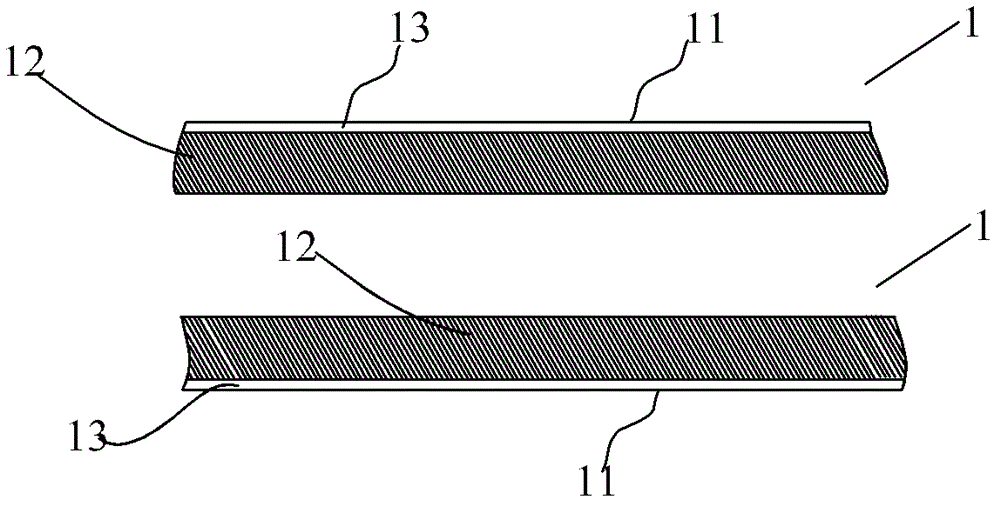[0002] With the development of
new energy technology, lithium-ion secondary batteries are used as a new type of energy storage device. Because of their advantages such as
high energy density, long cycle life, energy saving and
environmental protection, they are widely used in mobile phones, notebook computers, digital cameras, etc. The field has been more and more widely used; but because the performance of the lithium-ion secondary battery itself determines its high-current
charge and discharge performance and relatively poor safety performance, it also limits its application in
solar energy, wind energy, power vehicles, electric vehicles, etc. field application
[0003] As another new type of energy storage device, supercapacitors have been widely used in many fields because of their
high power density, high electrostatic capacity and longer cycle life than lithium-ion secondary batteries. It has the advantages of high
power density, fast
charge and discharge speed, and long cycle life, and is expected to be more widely used in
new energy vehicles,
solar energy, wind energy and other fields; but due to its low
energy density, it is difficult to perform continuous
discharge. Therefore, Limits the application of supercapacitors
[0004] Due to the technical defects that are difficult to overcome in the above-mentioned energy storage devices, people hope that a new type of energy storage device can combine the advantages of lithium-ion secondary batteries and supercapacitors to overcome their respective technical defects; thus, people A new type of energy storage component has been developed. The energy storage component connects the lithium-ion secondary
battery cell and the
supercapacitor, and then manages it through the
power management system, which makes the lithium-ion secondary battery and
supercapacitor The advantages of capacitors are effectively brought into play, but their manufacturing costs are high, and they do not fundamentally solve the technical defects of lithium-ion secondary batteries and supercapacitors
[0005] In order to fundamentally solve the technical defects of lithium-ion secondary batteries and supercapacitors, and to make better use of the advantages of the two, people have developed lithium-ion capacitors. The negative electrodes of lithium-ion capacitors generally use carbon materials. , the positive
electrode uses
activated carbon. In order to increase the
energy density of lithium ion capacitors, the carbon material of the negative
electrode is usually doped with lithium ions or adsorbed lithium ions by electrochemical methods, so that the potential of the negative
electrode decreases. Because the potential of the negative electrode that absorbs lithium ions is lower than The
activated carbon used in the positive electrode, therefore, the
voltage resistance of the
capacitor formed by combining it with the positive
activated carbon is improved, and the capacity of the negative electrode is much larger than that of the positive electrode, and the
energy density of the lithium-ion capacitor is improved; although the lithium-ion capacitor is effectively combined The advantages of lithium-ion secondary batteries and supercapacitors,
high energy density, high output characteristics and other advantages, but found in the process of use, its equivalent series
internal resistance is large, and in the process of repeated charging and discharging of lithium-ion capacitors , lithium ions are easily precipitated on the surface of the positive electrode, and then form dendrites, resulting in an internal
short circuit of the
lithium ion capacitor[0006] For this reason, Chinese invention
patent application publication CN101253588A published on August 27, 2008 discloses a
lithium ion capacitor. However, it is found in practice that since the positive and negative coating
layers cover the entire current collector, when
welding the positive and negative terminals on the current collector, it is usually necessary to scrape off part of the coating Therefore, the
processing technology is complex and the manufacturing cost is high; and the positive and negative terminals of lithium ion capacitors with this structure are usually welded by
ultrasonic welding at several points. Since the points are mostly arranged in a straight line, Moreover, the
internal resistance of the contact with the positive and negative electrodes is relatively large, which reduces the energy density of the lithium-ion capacitor and increases the calorific value during use, thereby reducing the overall life of the lithium-ion capacitor
[0007] Therefore, it is necessary to improve the structure of lithium ion capacitors based on the complex
processing technology, large
internal resistance, lithium ion capacitor positive electrode surface, lithium ion capacitor internal
short circuit and many other problems in traditional technology lithium ion capacitors.
 Login to View More
Login to View More  Login to View More
Login to View More 


